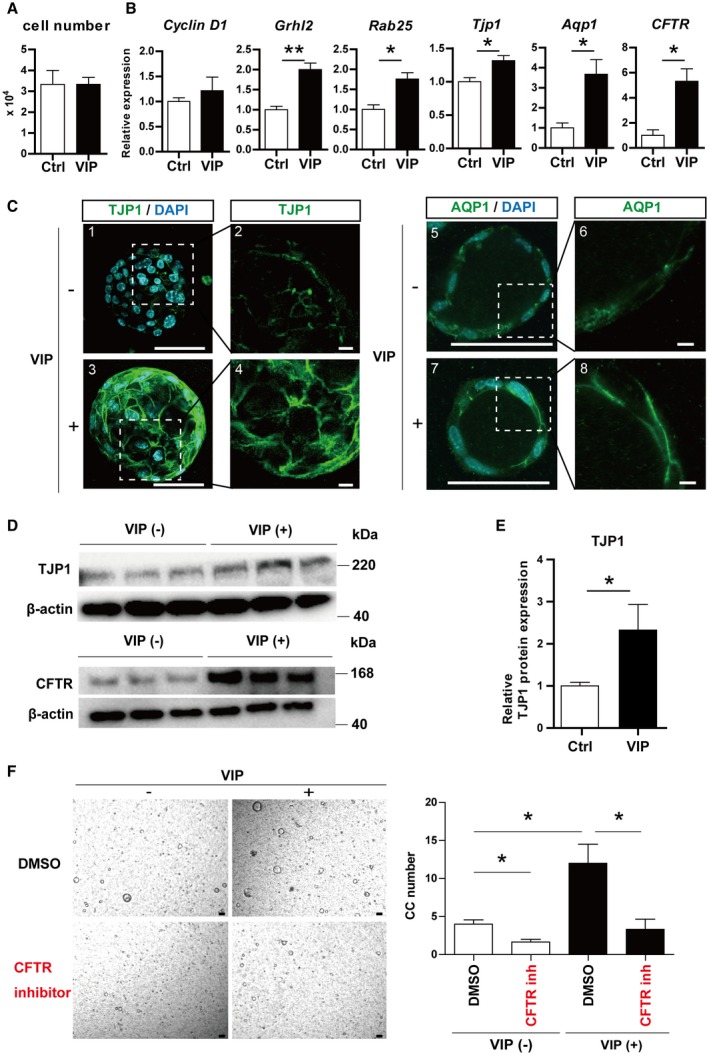Figure 4.

VIP promoted the establishment of tight junction and the production of CFTR and Aqp1 in cholangiocytic cysts. (A) Number of cells consisting of cholangiocytic cysts. (B) qRT‐PCR analysis of cholangiocytic cysts induced with or without VIP. Expression of cyclin D1 was not changed. Expression of genes related to tight junction (Grhl2, Rab25, and Tjp1) and ion/water transportation (Aqp1 and CFTR) was significantly increased in VIP‐treated cysts. (C) Immunostaining of TJP1 (ZO‐1; green, 1‐4) and AQP1 (green, 5‐8). Nuclei were stained with DAPI (blue). Production of TJP1 was increased by VIP and clearly lined the edge of cells. AQP1 was also clearly localized to the cell membrane in VIP‐treated cysts. Scale bars, 100 µm (1, 3, 5, 7), 10 µm (2, 4, 6, 8). (D) Immunoblot of TJP1 (upper panels) and CFTR (lower panels). Production levels in cholangiocytic cysts were both increased by VIP treatment. (E) Densitometry of TJP1 immunoblot shown in Fig. 4D, which was normalized by β‐actin. (F) Representative views (left panels) and numbers (right panels) of cholangiocytic cysts treated with VIP and/or CFTR inhibitor. Cholangiocytic cyst induction was impaired in the presence of CFTR inhibitor. Scale bars, 100 µm. Results represent the mean ± SD (Student t test). *P < 0.05, **P < 0.01. Abbreviations: CC, cholangiocytic cysts; DMSO, dimethyl sulfoxide; inh, inhibitor; ZO‐1, zonula occludens 1 (also known as TJP1).
